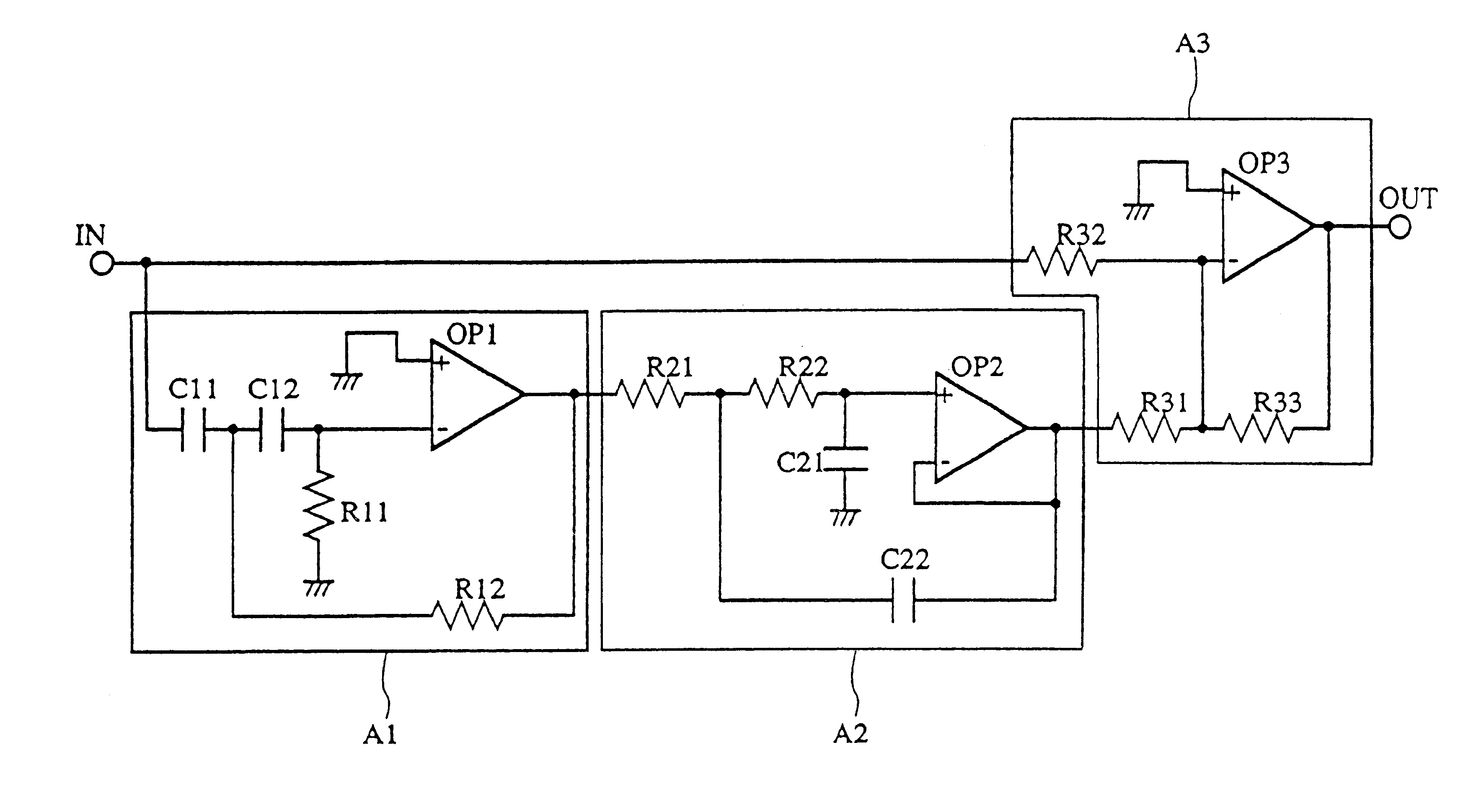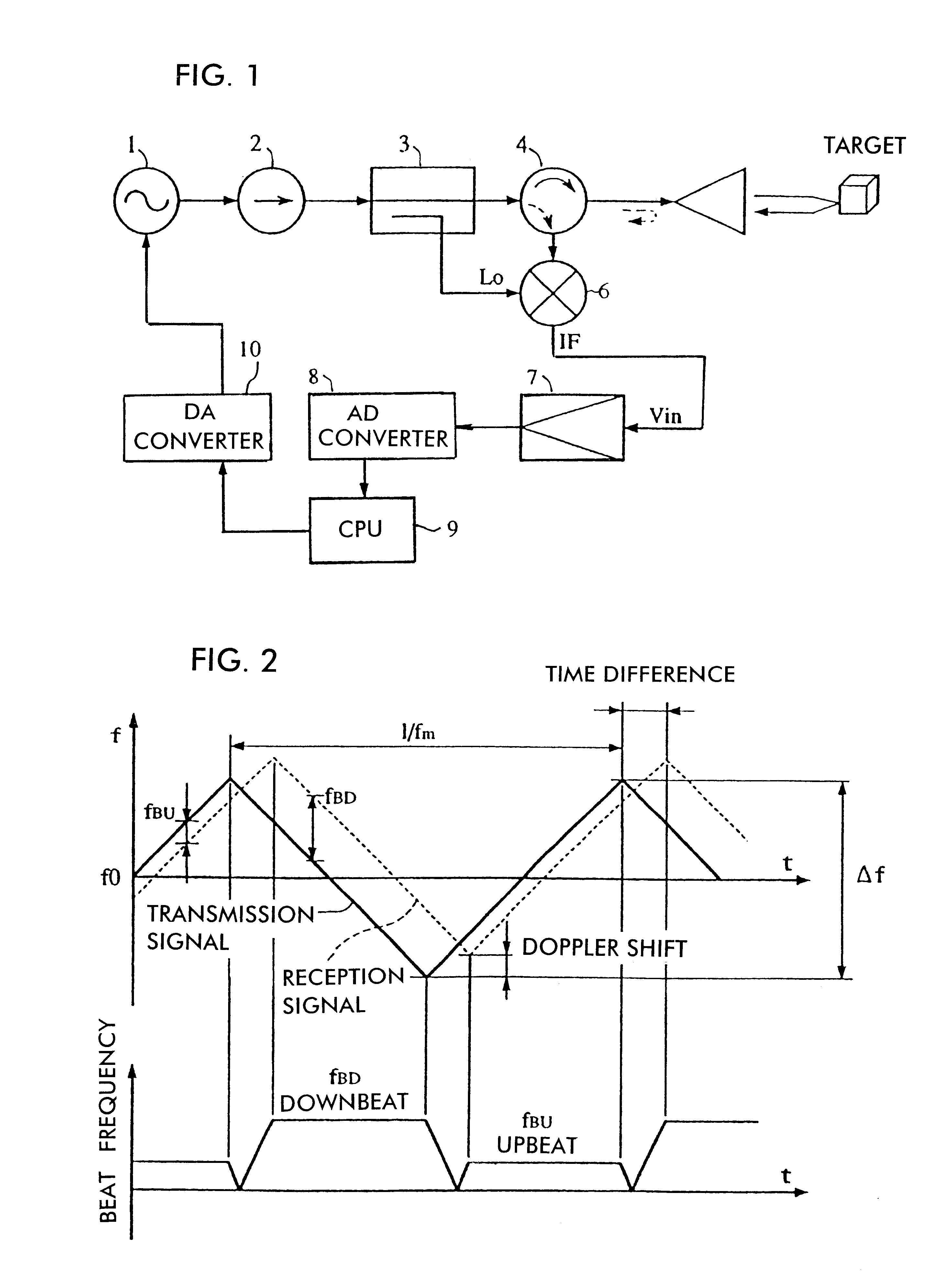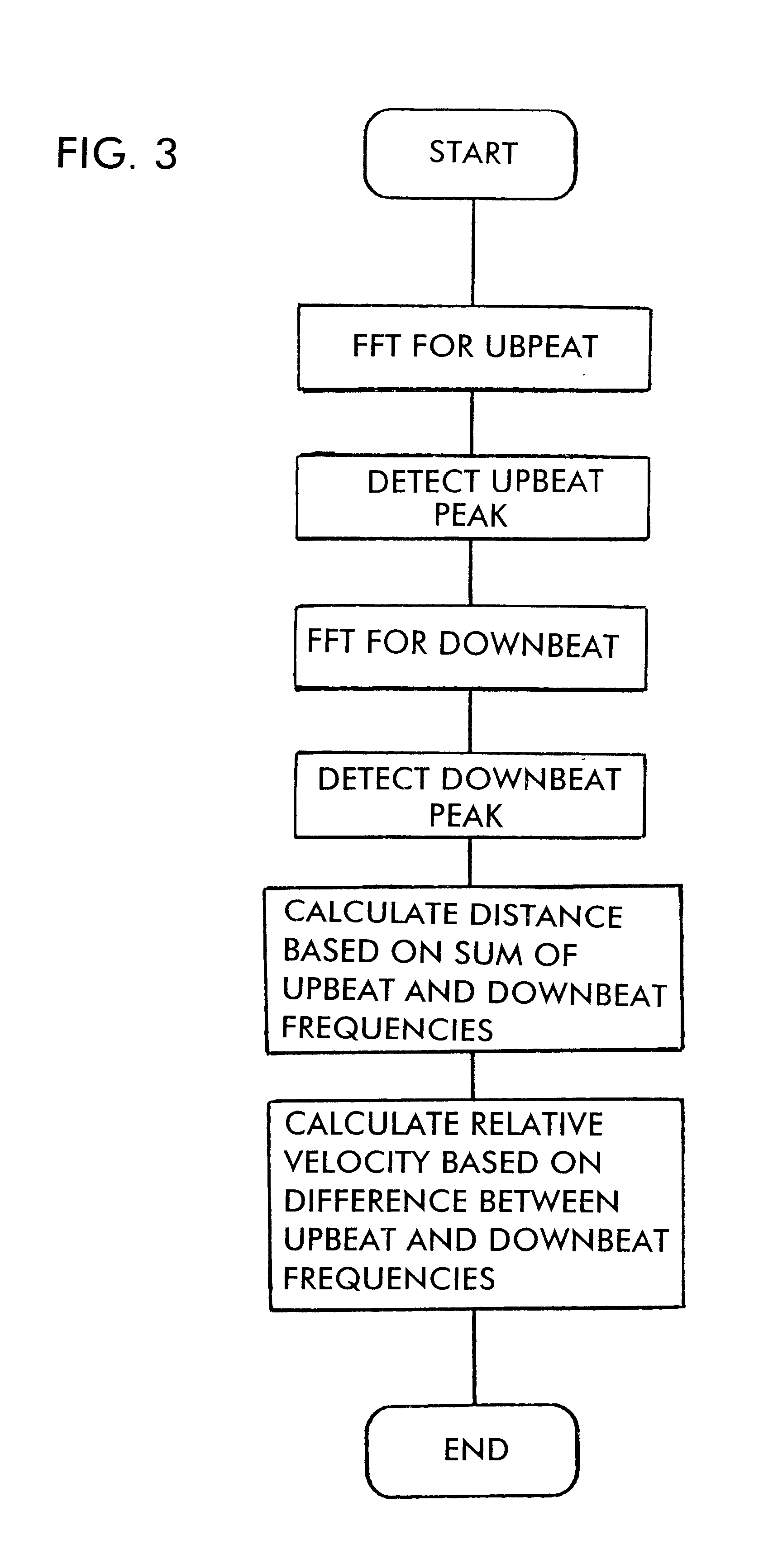Radar for detecting the distance to a target
a technology for detecting distance and target, which is applied in the direction of reradiation, measurement devices, instruments, etc., can solve the problems of increasing the overall size, incurring additional costs, and unable to achieve sufficient agc against an instantaneous change in the strength of reception signals
- Summary
- Abstract
- Description
- Claims
- Application Information
AI Technical Summary
Benefits of technology
Problems solved by technology
Method used
Image
Examples
first embodiment
The construction of a radar will now be described with reference to FIGS. 1 to 5.
FIG. 1 is a block diagram showing the overall construction of the radar. Referring to FIG. 1, a voltage-controlled oscillator VCO1 changes the oscillation frequency in accordance with a control voltage output from a DA converter 10. An isolator 2 transmits an oscillation signal from the VCO1 to a coupler 3, inhibiting a reflection signal from being input to the VCO1. The coupler 3 transmits a signal from the isolator 2 to a circulator 4, and feeds a predetermined ratio of a transmission signal to a mixer 6 as a local signal Lo. The circulator 4 transmits the transmission signal to an antenna 5, and feeds a reception signal from the antenna 5 to the mixer 6.
The antenna 5 transmits the continuous-wave transmission signal frequency modulated by the VCO1, and receives a reflection signal from the same direction. The antenna 5 also periodically changes the direction of beams over a range of detection angle....
second embodiment
Next, the construction of a radar will be described with reference to FIGS. 6 to 8.
FIG. 6 shows an example of variation in input signal Vin to the IF amplifier circuit 7 shown in FIG. 1 in relation to the distance R of a target from an antenna. As shown in FIG. 6, the level of reception signal varies in accordance with the size of the target, such as a large-sized car, a standard-sized car, and a motorbike. The input signal Vin also varies accordingly at a gradient of 1 / R.sup.4. However, when a reflection signal from a nearby target is received, in the case of a large-sized car, at a distance nearer than a distance Ra, as the level of reception signal increases, a saturation is caused due to the characteristics of the mixer 6, causing the gradient of Vin relative to the distance R to be less steep than 1 / R.sup.4. Thus, if the gain monotonously increases as the frequency rises as in the related art, a sufficient sensitivity is not achieved at short distances, namely when receiving l...
third embodiment
Next, the construction of a radar will be described with reference to FIGS. 9 and 10.
FIG. 9 shows an example of the gain-frequency characteristics of an IF amplifier circuit. Although characteristics at zero frequency, i.e., DC, and in the vicinity thereof are not shown in FIG. 7, as already described in the related art section, DC component or components in the vicinity thereof, if included in an IF signal, may degrade sensitivity, deteriorate SN ratio, and cause an erroneous detection. Thus, as shown in FIG. 9, the characteristics are such that the gain is zero at DC and the gain is decreased at frequencies lower than the frequency f.sub.IFmin of an IF signal corresponding to a minimum (shortest) detection distance.
FIG. 10 shows an example implementation of an IF amplifier circuit which exhibits the gain-frequency characteristics shown in FIG. 9. In FIG. 10, A4 is a circuit comprising capacitors C41 and C42 and a resistor R41, which attenuates lower frequencies. The constructions...
PUM
 Login to View More
Login to View More Abstract
Description
Claims
Application Information
 Login to View More
Login to View More - R&D
- Intellectual Property
- Life Sciences
- Materials
- Tech Scout
- Unparalleled Data Quality
- Higher Quality Content
- 60% Fewer Hallucinations
Browse by: Latest US Patents, China's latest patents, Technical Efficacy Thesaurus, Application Domain, Technology Topic, Popular Technical Reports.
© 2025 PatSnap. All rights reserved.Legal|Privacy policy|Modern Slavery Act Transparency Statement|Sitemap|About US| Contact US: help@patsnap.com



